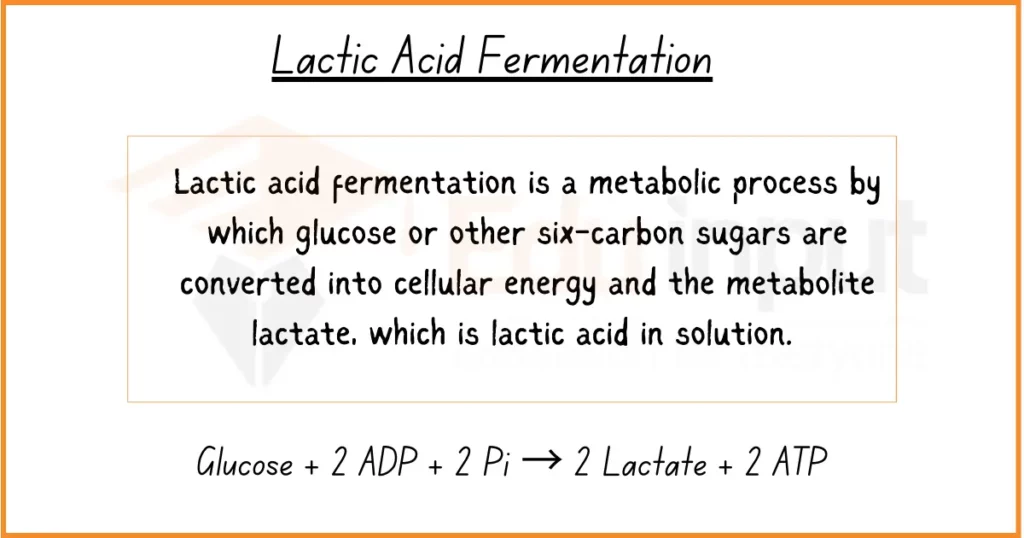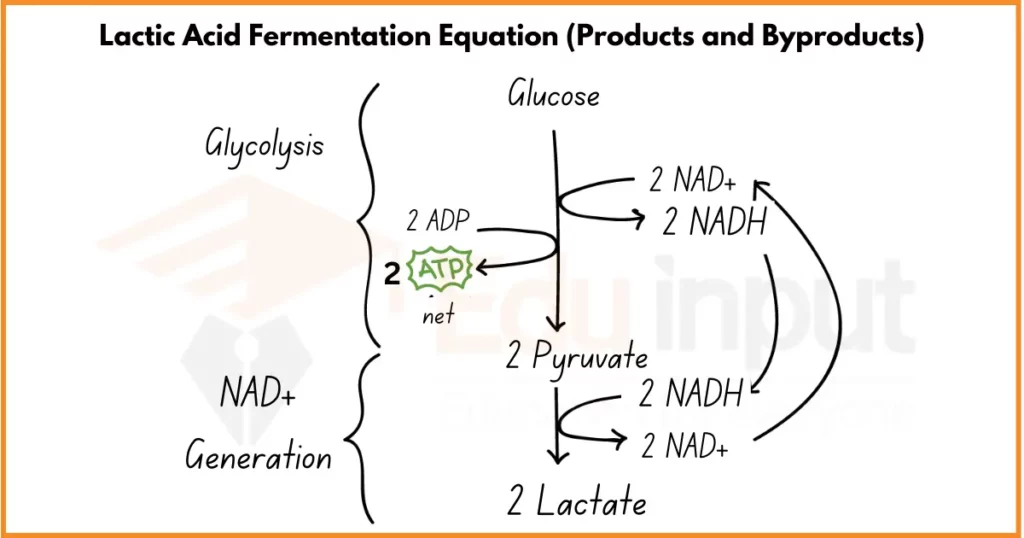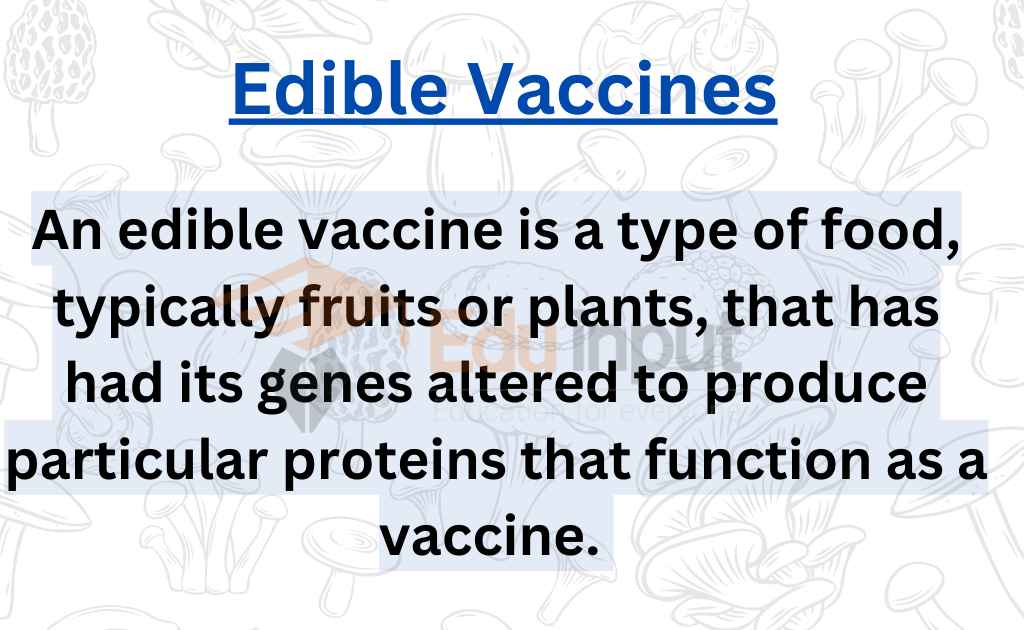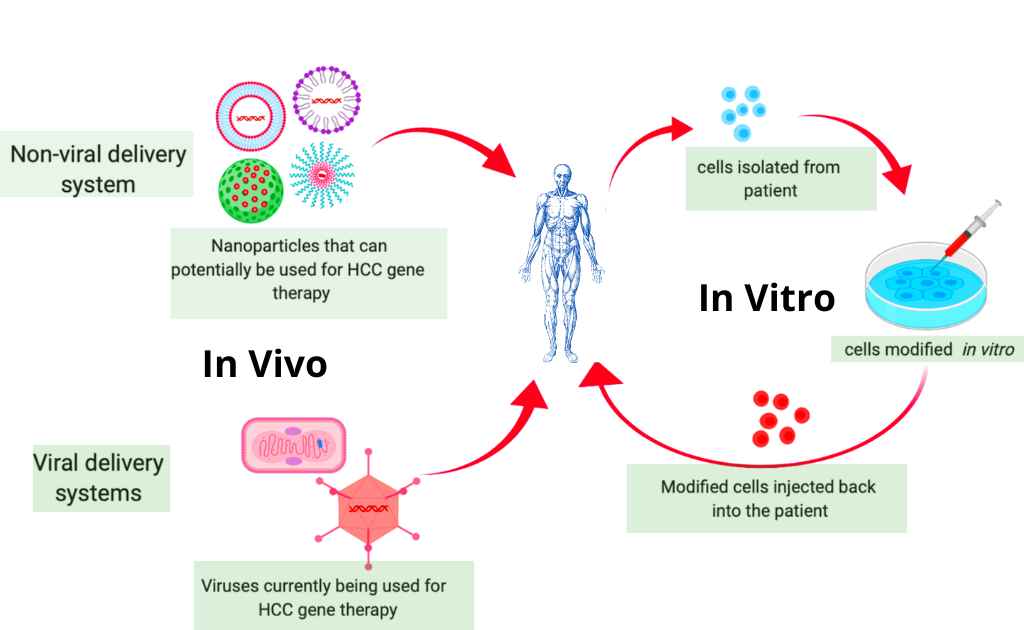Lactic Acid Fermentation-Definition, Equation, and Steps
Lactic Acid Fermentation Definition
Lactic acid fermentation is a type of fermentation and anaerobic metabolic process, which converts 6-carbon Sugars into Lactic Acid. It occurs in certain bacteria, such as bacteria in yogurt, and animal cells, including human muscle cells during intense exercise.
In this process, Carbohydrates are converted into cellular energy without using oxygen. The main byproduct is lactate, which forms lactic acid as a final product.

However, it is less efficient than aerobic respiration. Lactic acid fermentation serves as a quick burst of energy for our cells, but it falls short of powering long-term activities like marathons.
A prime example of this process can be observed in human muscle cells during intense physical activity.
When you exercise vigorously, your muscle cells may experience a shortage of oxygen. In these anaerobic conditions, your cells switch from aerobic respiration to lactic acid fermentation to continue producing ATP (energy).
Lactic acid bacteria are microorganisms that convert these carbohydrates into lactic acid through fermentation, playing crucial roles in food production (e.g., yogurt, cheese) and contributing to human gut health.
Lactic Acid Fermentation Equation (Products and Byproducts)
Here’s the Lactic Acid Fermentation Equation:
Glucose + 2 ADP + 2 Pi → 2 Lactate + 2 ATP
This equation focuses on the net gain from the process. Reactants and products can vary depending on the type of lactic acid fermentation. So do the equation accordingly.
Products and Byproducts of Lactic Acid Fermentation
The general outcomes of Lactic Acid Fermentation include:
Main Products
Lactic Acid: The primary product in most cases, contributing to the tangy flavor of fermented foods and aiding in preservation.
Common Byproducts
- ATP (adenosine triphosphate): Cellular energy currency, typically 2 molecules per glucose.
- NAD+ Regeneration: 2 NAD+ molecules per glucose, essential for continuing fermentation.
- Pyruvate: An important intermediate molecule formed during glucose breakdown before conversion to final products.
The specific products and their quantities can vary depending on the Lactic Acid Fermentation type:
1. Homofermentative Fermentation
- The main products of Homofermentative Fermentation are 2 molecules of lactic acid (lactate) per glucose molecule.
- The byproducts of Homofermentative Fermentation are 2 molecules of ATP
2. Heterofermentative Fermentation
- The main products of Heterofermentative Fermentation are Lactic acid (in lesser quantities compared to homofermentative), Ethanol, and Carbon dioxide (CO2)
- 1 molecule of ATP is produced as a byproduct of Heterofermentative Fermentation.
3. Bifidum Pathway
The Bifidum pathway, used by Bifidobacterium bifidum, produces more ATP than either homolactic or heterolactic fermentation.
- The main products of the Bifidum Pathway are 3 molecules of acetate, and 2 molecules of lactate.
- Bifidum Pathway produces 5 molecules of ATP as byproduct.
In all cases, the process involves the conversion of pyruvate (a 3-carbon molecule) to lactic acid (also a 3-carbon molecule). This allows for the regeneration of NAD+, which is essential to continue glycolysis and energy production in the absence of oxygen.
Steps Involved in Lactic Acid Fermentation
Lactic acid fermentation converts glucose and other six-carbon sugars into cellular energy and the metabolite lactate. It involves two stages:

Stage 1: Glycolysis
Glycolysis is the first stage of lactic acid fermentation, where glucose is broken down into pyruvate. This process occurs in the cytoplasm and does not require oxygen.
- Glucose (6-carbon molecule) is broken down into Glyceraldehyde 3-phosphate
- Glyceraldehyde 3-phosphate is converted to 3-Phosphoglyceric acid
- NAD+ is converted to NADH+H+ during this process
- 3-Phosphoglyceric acid forms Phosphoenol pyruvic acid
- Phosphoenol pyruvic acid is converted to Pyruvic acid
- Net 2 ATP molecules are produced
Stage 2: Pyruvate Reduction
In the second stage, the pyruvate produced during glycolysis is converted to lactic acid. This process regenerates NAD+, which is essential for the continuation of glycolysis.
- Pyruvic acid is reduced to Lactic acid
- NADH+H+ acts as the reducing agent and is reoxidized to NAD+
- The enzyme lactate dehydrogenase catalyzes this reaction
- Two lactate/lactic acid molecules are produced from two pyruvate/pyruvic acid molecules
Applications Of Lactic Acid Fermentation
Lactic Acid Fermentation offers applications across a range of fields like:
- Dairy products (yogurt, cheese, kefir)
- Fermented vegetables (sauerkraut, kimchi, pickles)
- Bread making (sourdough)
- Meat preservation
- Alcoholic beverages (certain beers and wines)
- Probiotic supplements
- Cosmetics and skincare
- Biodegradable plastics production
- Animal feed preservation
- Pharmaceutical industry
- Textile industry
- Leather tanning
- Ethanol production
- Waste treatment
- Green solvents manufacturing






Leave a Reply